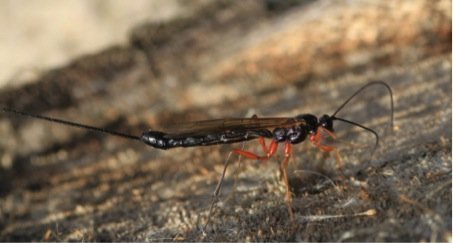South Africa, antelopes enjoy eating the juicy leaves of an acacia tree. Still hungry, they strut to the nearest acacia and look forward to the sweet taste of the leaves, but this tree suddenly tastes bitter. The leaves of the next acacia as well. The language of plants is still a mystery to us, but we already know a few things and are making this knowledge available to you in summary form.
In the realm of plant hormones: ethylene
Ethylene is a naturally occurring odorless and colorless gas. It belongs to the phytohormones and regulates growth and development of the plant.
How do ethylenes affect the environment?
If, for example, an acacia is nibbled on, it expels the odorless, sweetish gas. Trees in the immediate vicinity understand the signal and suddenly increase the tannin content in their plants. This creates an unpleasant taste and digestive problems for animals that try to eat the leaves.

Beguiling and alarming fragrances
Some plants not only secrete phytohormones, but also scents that attract insects. For example, corn produces a scent that attracts a certain species of parasitic wasps. These parasitic wasps prefer to eat this particular type of caterpillar and very quickly there is nothing left of the harmful caterpillars. The scent will not be released until the attacker's saliva is identified, luring her hungry helpers.

The scent of ripe rotten fruit can be deadly
Everyone knows the Venus flytrap, like other plants it is able to release scents to attract insects. This type of plant communication is the most common. The Venus Flytrap lures its victims into its fangs with a flower-like color and the scent of ripe and rotten fruit. If a potential victim touches the sensory hairs on its snap trap at least twice within a short period of time, it snaps shut in a split second.
If you want to know more about carnivorous plants, then have a look at our page.
Pheromones of an African beauty
The Candlestick Flower also has an extremely interesting method of plant communication. It mimics a bee's alarm pheromone and uses it to attract certain flies. The flies think the bee is being attacked by a spider and they can then eat some of the remaining prey.
But the flies thought wrong, they fly into the flower of the candlestick flower without any premonition and are trapped there. After 24 hours, the candlestick flower releases the flies and thus ensures successful pollination. If you want to know more about the candlestick flower, have a look at our website.

Wildfire, 2006-10-28Ceropegia01, CC BY-SA 3.0
The secret world of phytoncides
Another type of plant communication is the effect of phytoncides. Phytoncides, also known as phytoantibiotics, are biological agents that are produced by plants and released into the environment. They are an important factor in plant immunity and are characterized by an antibiotic effect.
How do phytoncides affect insects and pests?
Tokin (1956) was the first to observe the effect of phytoncides on bacteria. He ground a clove of garlic, which released volatile substances and killed bacteria, among other things. Normally the antibiotic effect wears off quickly, but with garlic the effect did not wear off even after 200 hours.Walnut leaves and lavender serve as moth protection thanks to the phytoncides

Do plant signaling substances such as phytoncides also affect humans?
Did you always feel refreshed and deeply relaxed after a walk in the woods? Do you come home, have a coffee on your jungle-like balcony and feel like you're on cloud nine? Then we'll show you some amazing insights as to what could be causing this.
Let's go forest bathing today
In some studies, Japanese researchers found the positive effect of forest walks. Walks in the forest promote the production of three different anti-cancer proteins and the formation of natural killer cells that seek out and attack cancer cells. The phytoncides are said to be responsible for this.
Forests not only support your immune system, but also lower blood pressure and pulse at the same time. The lush green, the filtered air and the scent of wild herbs reduce stress hormones. Plants therefore have an extremely calming effect on us humans.
Do indoor plants also affect my health?
But of course, not only forests can improve your well-being, but also the plants in your home. Some indoor plants have an air-purifying effect and can improve your entire indoor climate. However, plants not only purify the air, but also increase our labor productivity and improve the ability to learn. Numerous studies also show that people are particularly good at reducing tension and recovering from everyday stress more quickly when they look at plants.

Plants are incredibly exciting and have interesting mechanisms to protect themselves from pests. This type of plant communication has a positive effect on us humans. That means: you need more plants in your life, because plants make you happy and healthy. If you want to create your own little forest at home, take a look at our site and get inspired.
.


















Leave a comment